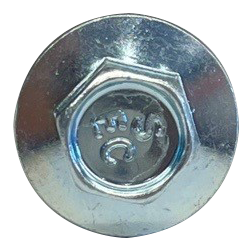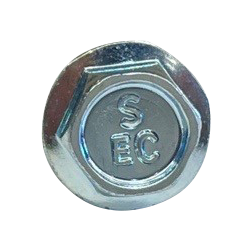The main difference between SDS screws with flange head and those with washer head is the shape of the head of the screw.
SDS screws with flange heads have a wider head with a built-in washer that provides a larger bearing surface and distributes the load over a wider area. This can be useful for applications where a strong and secure hold is required, such as in construction or structural applications. The flange head can also help to prevent the screw from sinking too deeply into the material being attached, which can help to avoid damage to the material or the screw.
SDS screws with washer heads, on the other hand, have a flat or slightly rounded head with a separate washer that is attached underneath the head. The washer provides additional support and helps to prevent the screw from sinking too deeply into the material being attached. This type of screw is commonly used in applications where a neat appearance is desired, such as in woodworking or cabinetry.
Normally, Flange head SDS will goes with EPDM/PVC washer and washer head SDS will goes with EPDM steel bonded washer to avoid water leaking on the roof.
Both flange head and washer head SDS screws are designed to drill their own hole and create threads as they are driven into the material. This makes them a convenient option for attaching materials without the need for pre-drilling, and can save time and effort in many applications. When choosing between these two types of SDS screws, it is important to consider the specific needs of the application and select the screw that is best suited to the materials, load requirements, and aesthetic preferences.
 Flange Head |
 Washer Head |